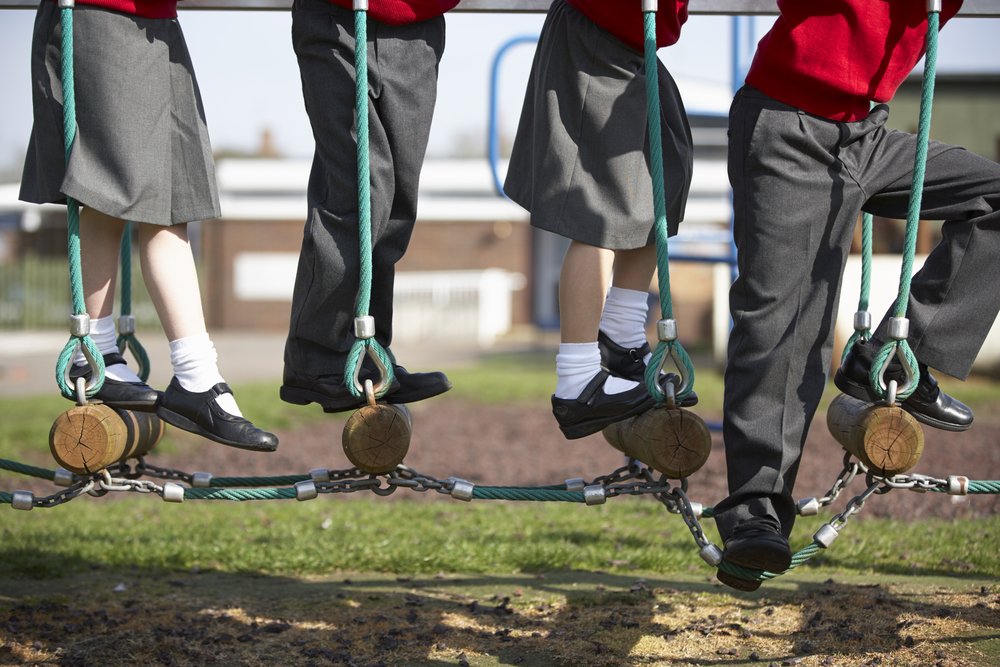This is the second article in a two-part series on contractors in schools. In this series, Jonathan Oliver, Senior Business Consultant at CompliSpace, investigates the legal relationship between schools and contractors. Such considerations include an analysis of the content of contracts, the duty of care schools owe, and staff responsibilities and intervention.
Contractors Running Programs for Students - Staff Attendance and Supervision
Staff attendance and supervision when an activity is run by a contractor is desirable in almost all circumstances. If staff do not attend, the school will remain liable whilst passing all control to the contractor – in this way, the school’s fate is in someone else’s hands. There are circumstances where the school may choose to outsource using a contractor in this way. There are contractors that understand the requirements of duty of care in a school setting. An example may be a former teacher who is running their own sports business. Most schools should have a policy that would require a teacher to be present in all circumstances regardless of the background and training of the contractor.
Staff Intervention
Should staff be instructed to intervene if they are concerned about an activity being run by contractors? The answer must always be ‘yes’ given the non-delegable duty of care that the school owed its students. Staff should always exercise their judgement to stop the activity or modify the activity so that it takes place in a way that is, in the opinion of the staff member, safe for the students.
The caution here is that staff must be careful to ensure that their judgements as to the safety of the activity are not clouded by their own fears of participating in the activity.
Examples of situations where a staff member may choose to intervene in the running of an activity include:
- the activity is being run during hot weather without sufficient shade or fluid intake by students;
- there appears to be a lack of attention to important safety details by the contractor;
- the contractor fails to enforce safety requirements previously communicated to the group. (eg wearing of life jackets, mouth guards, shin guards);
- the contractor appears to be affected by drugs, alcohol, stimulants, lack of sleep, sickness;
- the contractor appears to be unable to adequately instruct the students. This is especially relevant where activities can require students to immediately obey the command of an instructor to ensure their own safety;
- if particular students have not been paying attention during safety briefings and it appears that they are not likely to follow the contractor’s commands during the activity, then staff should consider requiring the student to sit out of the activity for the students’ own safety;
- emergency management and first aid; where the school has their own requirements and emergency management procedures. Care needs to be taken to avoid conflicting instructions in emergency situations – students don’t need the added stress of conflict between the contractor and school staff; and
- to ensure discipline of students is appropriate. Some contractors may have limited experience in disciplining children and will not do so in an appropriate manner in line with a school’s own policies.
Child Protection: Supervision of Contractors
Increasingly, schools are required by legal reform to ensure that contractors who have contact with students are familiar with the school's child protection policies and procedures. For example, some of the Victorian Child Safe Standards apply to "school staff" - a term which is defined broadly under Victorian legislation. Ministerial Order 870 defines school staff in non-government schools as including an "individual working in the school environment who is:
In accordance with the Child Safe Standards, a school's Child Protection Code of Conduct and its selection, supervision and management strategies must apply to the "school staff". This creates a legal obligation for schools to ensure that contractors are educated on child protection matters, understand their legal obligations and also means that their suitability to work with children can be monitored by the school.
Workers Compensation
Anybody who operates a business and employs workers must have a current workers compensation insurance policy. All contractors should carry their own workers compensation insurance.
Interesting Cases Involving Injuries to Students
The following two cases demonstrate how important it is for schools to understand how the school-contractor relationship can be viewed by the courts when things go wrong. While the cases involve some complex legal concepts, the facts of each case are not uncommon and many schools are likely to relate to the events. The should prompt schools to revisit their contractor relationships and arrangements and obtain legal advice to ensure they are managed properly and in line with current legal expectations and requirements.
Harris v Perisher Blue Pty Limited [2011] NSWDC 172
The proceedings arose out of a skiing accident which occurred at the Perisher Ski resort in the Snowy Mountains on 29 July 2006. The plaintiff was a school student on an excursion to the resort. He sustained serious injuries when, in the course of a beginners' skiing lesson, he failed to negotiate a "ditch" located towards the bottom of the beginners' slope. He somersaulted forward and was injured when he landed heavily on his back.
The student sued the school and the operator of the ski resort. The school, Penshurst Marist Brothers School ("PMBS"), organised the three-day excursion to the ski resort. The student’s claim against the ski resort operator, Perisher Blue, alleged negligence in failing to take adequate precautions to prevent injury to beginner skiers by reason of the difficulty they would confront in negotiating the ditch.
The student also sued PMBS arguing that they were liable because they breached their non-delegable duty to him to ensure that reasonable care was taken for his safety during his ski lessons. PMBS filed a cross-claim in which they sought an indemnity or a contribution from the operators in respect of any damages for which they were found to owe the student.
The District Court upheld the student’s damages claim in negligence against Perisher Blue. The Court also held the school liable to the student by reason of the breach of their non-delegable duty of care. The Court decided that full financial responsibility for the injury should lie with Perisher Blue as it had undertaken a beginner ski lesson in an area of the ski fields that was unsuitable for such a lesson.
The points to note from this case include:
- it is yet another restatement for the non-delegable duty of care owed by a school; and
- the Court saying that a large and potentially dangerous ditch in a beginners ski slope is not an ‘obvious risk’ from a ‘dangerous recreational activity’ and therefore Perisher Blue could not rely on the protection available in such circumstances offered by the NSW Civil Liability Act.
De Beer v State of NSW [2009] NSWSC 364
Michael De beer was a year 11 student who was attending St Ives High School (the School) and was attending a school camp being run by Outdoor Education Australia Pty Ltd (OES) in May 2001. Michael was a year 11 peer support leader on the Year 7 camp. Michael suffered an electrical shock when he picked up an electrical power board that had no back cover and he was exposed to live electrical wires.
After he was electrocuted he said “ I think I have just been electrocuted” and the teacher apparently laughed. He then said, “seriously I think something just happened”. He began to shake and feel pins and needles and tingling in his hands and feet. The teacher asked if he felt OK and he said: “can you go and get some help”.
He then became more distressed and was shaking uncontrollably. An ambulance attended but did not take him to a hospital as he said he did not want to go to hospital and just be monitored there. The ambulance left. He found he was unable to walk without assistance and so he was helped to a car and taken to the accommodation block and then sat in a shower. He then went to bed. The headache and shaking continued. He was monitored that night by a staff member.
Next morning he still had problems walking, he had a headache, pins and needles and tingling. He left the camp on the bus and returned to school with the other students. He was still unsteady on his feet and had the other symptoms. He completed an incident report and saw his GP and then a range of specialists over time for his symptoms which remained unresolved.
He has long term health issues affecting his ability to concentrate and other long-term issues that have meant that he was unable to complete tertiary studies and maintain gainful employment.
The School accepted liability and the court found that OES was also liable and apportioned financial responsibility between the two organisations.
What is interesting about this case is the management of the student after the accident. The student was allowed to have too much say in his own treatment and normal precautions were not followed including having him transported to hospital for further assessment. Many students can think they are OK immediately after an accident when they are suffering far more serious injuries than they realise. There is sometimes a level of ‘bravado’ in students response to their injuries. It is important that properly trained staff follow clear procedures in situations like this whether on campus of off-campus. It also illustrates again the way that a court will apportion responsibility between a contractor and a school. And it is another example of the importance of a school not signing indemnity and waiver clauses with contractors.



